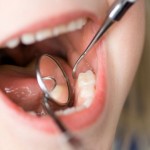Endodontics is the dental specialty that deals with the treatment of the root canal, for example, any infections and problems that arise within the tooth. Its main task is to eliminate the dental pulp, which for some reason, is dead or damaged. Your local Dentist in Wildwood will then clean the area and fill the tooth, restoring its functionality and aesthetics. This procedure used to be painfully excruciating, but with modern dentistry, it is practically painless.
Treatment of mechanized endodontics is a clear example of where dentistry has evolved in recent years. Where once having resolved the damaged pulp with tooth extraction, today endodontics allows for a less invasive treatment to preserve the tooth, which recovers all its functions. Thanks to endodontics, teeth are saved that otherwise would have been lost.
What are the causes of injury or death in the dental pulp?
There are three main factors that can affect the pulp: broken teeth, deep caries or injury to the tooth. When some of these causes occur and the pulp becomes infected or dies, it’s important that you seek treatment as quickly as possible. Otherwise a deposit of pus can form on the tip of the root, forming an abscess infection. This not only causes pain, but can also destroy the bone surrounding the tooth. At this point, you should seek help from your local dentist in Wildwood.
What is endodontic treatment?
Endodontics applies a personalized treatment for each patient, which usually takes one or two sessions. Once a problem has been diagnosed, the General Dentist will make a small hole in the tooth to reach inside and perform a pulpectomy. At this stage, the diseased pulp will be cleaned. Both the pulp chamber and root canals are cleaned out before filling them with a biocompatible material. Then the tooth is sealed again.
How long does a tooth last that has undergone treatment?
Endodontically treated teeth can last a lifetime as long as they are taken care of properly. If a tooth is prone to fracture due to the treatment, the Dentist in Wildwood proceeds to place a dental inlay or crown according to the amount of remaining tooth that is left. This will restore dental functionality. In any case, it is necessary for the patient to maintain regular visits with the dentist to control the evolving situation. Visit their website for more information on dentistry.





